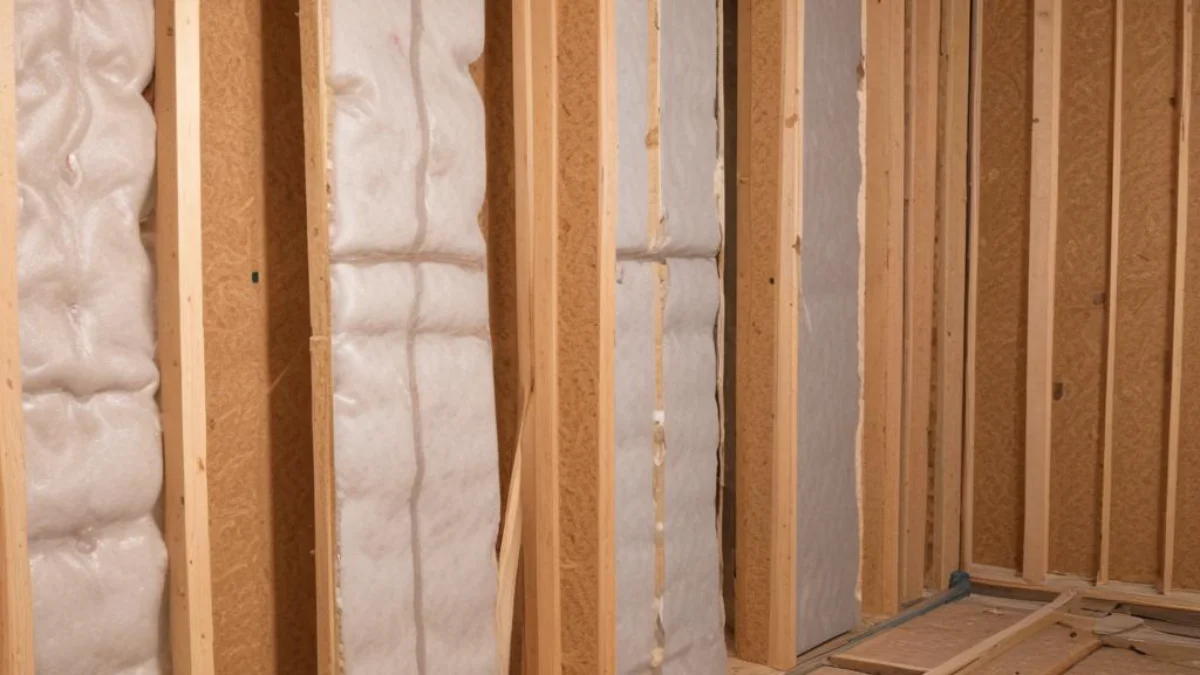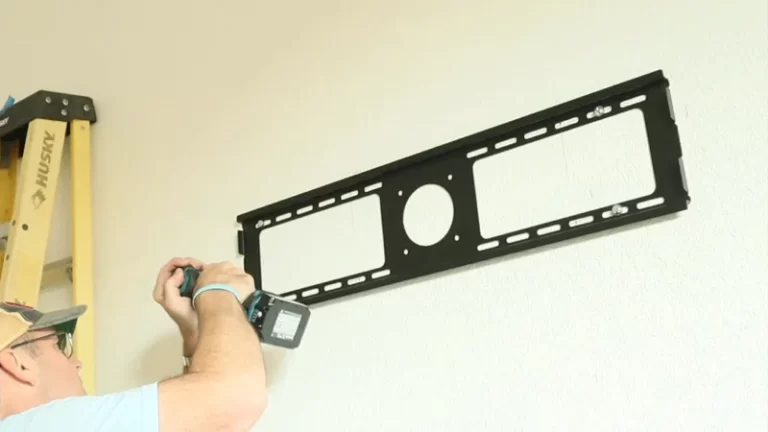Can You Really Use R-19 Insulation in a 2×4 Wall? The Surprising Answer
You’re planning an insulation project and want the highest R-value possible for your 2×4 walls. You see R-19 insulation on the shelf and think, “more is better, right?” This common assumption leads many homeowners and DIYers to a critical mistake: trying to force insulation designed for a 2×6 wall into a shallower 2×4 cavity.
The core of the problem lies in a misunderstanding of how fiberglass insulation works. Its thermal resistance, or R-value, depends on the tiny air pockets trapped within the fibers. When you compress a thick batt into a space that’s too small, you squeeze out that trapped air, which significantly compromises its insulating power.
You'll Learn About
The Problem: Compression and Diminished R-Value
Standard 2×4 walls have a cavity depth of 3.5 inches. R-19 fiberglass insulation, on the other hand, is manufactured to be about 6.25 inches thick to fit snugly in a 2×6 wall cavity, which is 5.5 inches deep. Shoving that bulky 6.25-inch batt into a 3.5-inch space is a recipe for poor performance.
While compressing fiberglass does increase its density (and therefore its R-value per inch), the overall R-value of the batt decreases because you’ve drastically reduced its thickness. You’re losing inches of insulation, and that loss outweighs the marginal gain in density. In fact, an R-19 batt compressed into a 3.5-inch cavity will perform at an R-value closer to R-13 or R-14. You end up with a lower R-value than if you had just used the correct product in the first place.
Why This Happens: The Science of Air Pockets
Think of a fluffy down jacket. Its warmth comes from the air trapped between the feathers. If you were to vacuum-seal that jacket, it would become thin, dense, and far less effective at keeping you warm. The same principle applies to fiberglass insulation.
The primary function of the glass fibers is to prevent air from moving, which stops heat transfer through convection. When the insulation is compressed, the air pockets shrink, and the material relies more on the conductivity of the fiberglass itself, which is less effective. Furthermore, this compression can create gaps and voids, especially around wiring and plumbing, leading to drafts and moisture problems.

The Solution: Choosing the Right Insulation for 2×4 Walls
To achieve optimal thermal performance in a standard 2×4 wall, you must use insulation specifically designed for a 3.5-inch cavity. Fortunately, you have several excellent options that provide high performance without the need for compression.
Using the correct insulation not only ensures you get the R-value you paid for but also makes the installation process smoother and more effective. It can be tempting to try and over-insulate, but sometimes exploring if you can you double up insulation isn’t the best approach for wall cavities.
High-Density R-15 Batts: The Superior Choice
The best solution for a 2×4 wall is a high-density R-15 fiberglass batt. These batts are specifically engineered to be 3.5 inches thick but contain more glass fibers than standard R-13 batts. This increased density provides a higher R-value without needing to be compressed, giving you the maximum thermal resistance possible for your wall cavity.
High-density batts are stiffer and easier to cut and fit around obstacles like electrical boxes and pipes. This ensures a snug fit that fills the entire cavity, eliminating gaps and maximizing performance. While they may cost slightly more than standard R-13 batts, the long-term energy savings and improved comfort are well worth the investment.
Standard R-13 Batts: A Reliable Alternative
If high-density R-15 batts are not available or are outside your budget, standard R-13 fiberglass batts are the correct and most common choice for 2×4 walls. These batts are manufactured to the proper 3.5-inch thickness, ensuring they fill the cavity completely without compression.
While R-13 offers slightly lower thermal resistance than R-15, it still provides a significant improvement in energy efficiency and is a perfectly acceptable solution that meets building code requirements in many regions. The key is proper installation, ensuring the batts are not compressed and that there are no gaps.
Other Insulation Options for 2×4 Walls
Beyond fiberglass batts, other materials can offer excellent performance in a 2×4 wall assembly. For those aiming for even higher performance, such as achieving an r80 insulation level in an attic, understanding material choices is key. Consider these alternatives for your walls:
- Rock Wool (Mineral Wool): Rock wool batts, such as Rockwool Comfortbatt, offer an R-value of R-15 for 2×4 walls. This material is denser than fiberglass, providing superior sound-dampening qualities and increased fire resistance.
- Spray Foam Insulation: Closed-cell spray foam can achieve R-values of R-6 to R-7 per inch. In a 3.5-inch cavity, this can yield a total R-value of over R-20. It also creates a powerful air barrier, but it is a more expensive option that typically requires professional installation.
- Rigid Foam Boards: Products like Polyiso or XPS rigid foam can be cut to fit within stud cavities. While they offer high R-values per inch, achieving a perfect seal can be difficult and is often used in combination with other materials or as continuous exterior sheathing, a concept related to the differences between plywood vs sheathing.
Insulation Performance Comparison
Understanding the numbers can help illustrate why choosing the right product is so critical. Here is a breakdown of how different insulation choices perform within a standard 3.5-inch wall cavity.
| Insulation Type | Designed Thickness | Installed R-Value in 2×4 Wall | Notes |
|---|---|---|---|
| R-19 Fiberglass Batt (Compressed) | 6.25 inches | ~R-13 to R-14 | Not recommended; overall performance is reduced. |
| R-15 High-Density Fiberglass Batt | 3.5 inches | R-15 | Optimal choice for 2×4 walls. |
| R-13 Fiberglass Batt | 3.5 inches | R-13 | Standard, effective, and code-compliant choice. |
| R-15 Rock Wool Batt | 3.5 inches | R-15 | Excellent thermal, sound, and fire resistance. |
| Closed-Cell Spray Foam | N/A (Applied) | ~R-21 | Highest R-value; creates an air seal but costs more. |
Is R-19 Insulation Better Than R-30?
When considering insulation for your home or building, the terms R-value and insulation thickness play a crucial role in determining the material’s effectiveness. The R-value measures the thermal resistance of an insulating material—the higher the R-value, the better the material is at resisting heat flow. In this article, we compare two common insulation ratings: R-19 and R-30, examining their differences and which one might be the better option for various applications.
R-19 Insulation
R-19 insulation is typically used in areas where the insulation doesn’t need to resist significant temperature fluctuations. It’s most often found in interior walls, floors, and certain parts of attics. The insulation material with an R-19 rating generally provides about 19 units of thermal resistance. This is sufficient for minimizing heat transfer in environments where temperatures are relatively stable or where there is limited external exposure to extreme conditions. For example, interior walls between rooms in a house typically don’t need the high level of resistance that R-30 offers, and R-19 may be more than adequate in these situations.
However, R-19 is less effective at preventing heat loss or gain compared to higher R-values like R-30. In locations where the temperature variation between the inside and outside of a home is more extreme, such as in attics or exterior walls, R-19 may fall short of providing the energy efficiency needed.
R-30 Insulation
On the other hand, R-30 insulation is generally used in areas where there is a significant need to resist heat flow. This type of insulation is most commonly used in attics, ceilings, and exterior walls, where heat loss and gain can be considerable. An R-30 rating provides a much higher level of thermal resistance compared to R-19, making it better for maintaining consistent indoor temperatures and improving energy efficiency.
In colder climates, R-30 insulation is often recommended for attics and ceilings to prevent heat from escaping, reducing the load on heating systems. Similarly, in warmer climates, R-30 can help keep homes cooler by preventing heat from entering through the roof or walls. This can result in lower heating and cooling costs, as well as increased comfort within the living spaces.
When to Use R-19 vs. R-30
The choice between R-19 and R-30 largely depends on the specific location of the insulation and the climate conditions of the area.
-
R-19 Insulation is suitable for:
-
Interior walls: These walls don’t experience drastic temperature differences between the inside and outside, so R-19 is typically sufficient.
-
Floors: In areas where heat loss from below is less of an issue, such as ground-level floors, R-19 can offer adequate protection.
-
Mild climates: In regions with moderate temperatures, R-19 may offer sufficient thermal resistance.
-
-
R-30 Insulation is ideal for:
-
Attics: Since heat rises, attics can be a major point of heat loss or gain, making R-30 a better option for energy conservation.
-
Ceilings: Like attics, ceilings are another area where significant heat transfer can occur, and R-30 insulation can help prevent this.
-
Exterior walls: In colder or hotter climates, R-30 helps maintain consistent indoor temperatures.
-
Extreme climates: In areas with extreme weather conditions, R-30 helps reduce the need for constant heating or cooling.
-
Final Recommendations for Your Project
When insulating 2×4 walls, the goal is to fill the cavity completely without compressing the insulation. Do not use R-19 insulation in a 2×4 wall. Squeezing it in will only reduce its effectiveness and could lead to other performance issues.
Instead, choose an insulation product designed for the 3.5-inch depth of a 2×4 wall cavity. For the best thermal performance, select high-density R-15 batts. If you are looking for a more budget-friendly yet effective option, standard R-13 batts are a reliable choice. By using the right materials, you ensure a properly insulated home that is comfortable, energy-efficient, and built to last.

